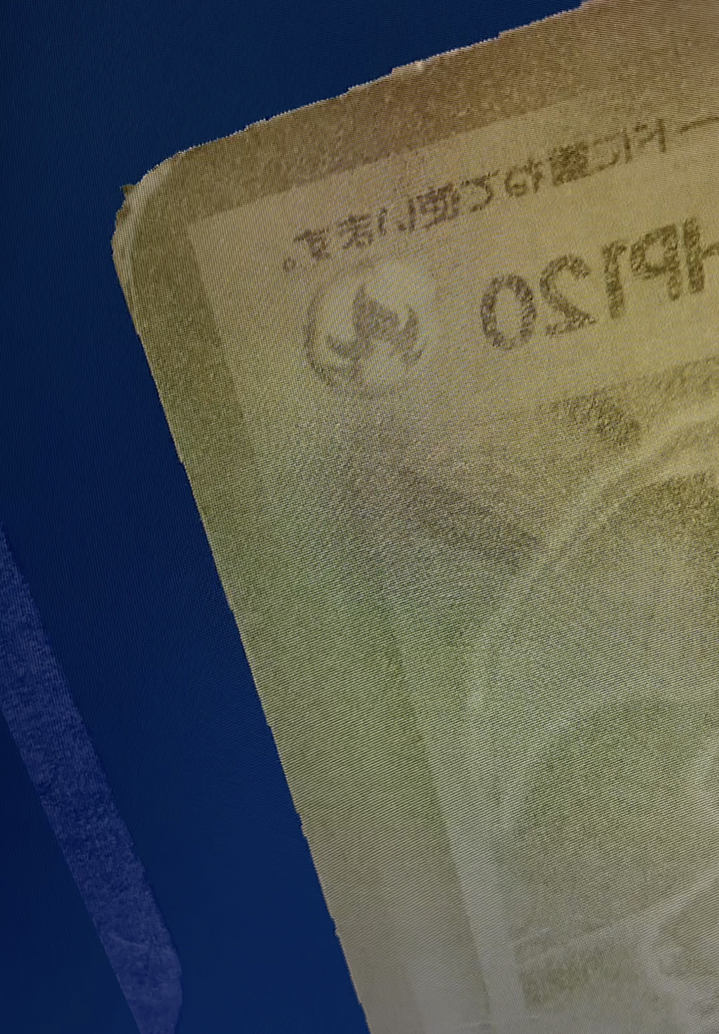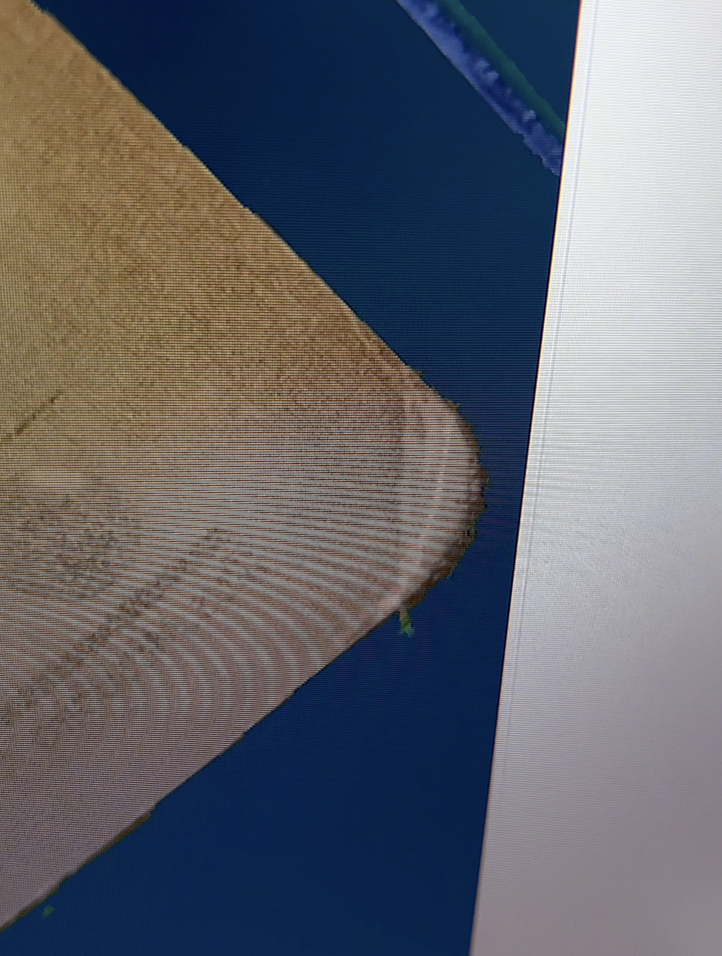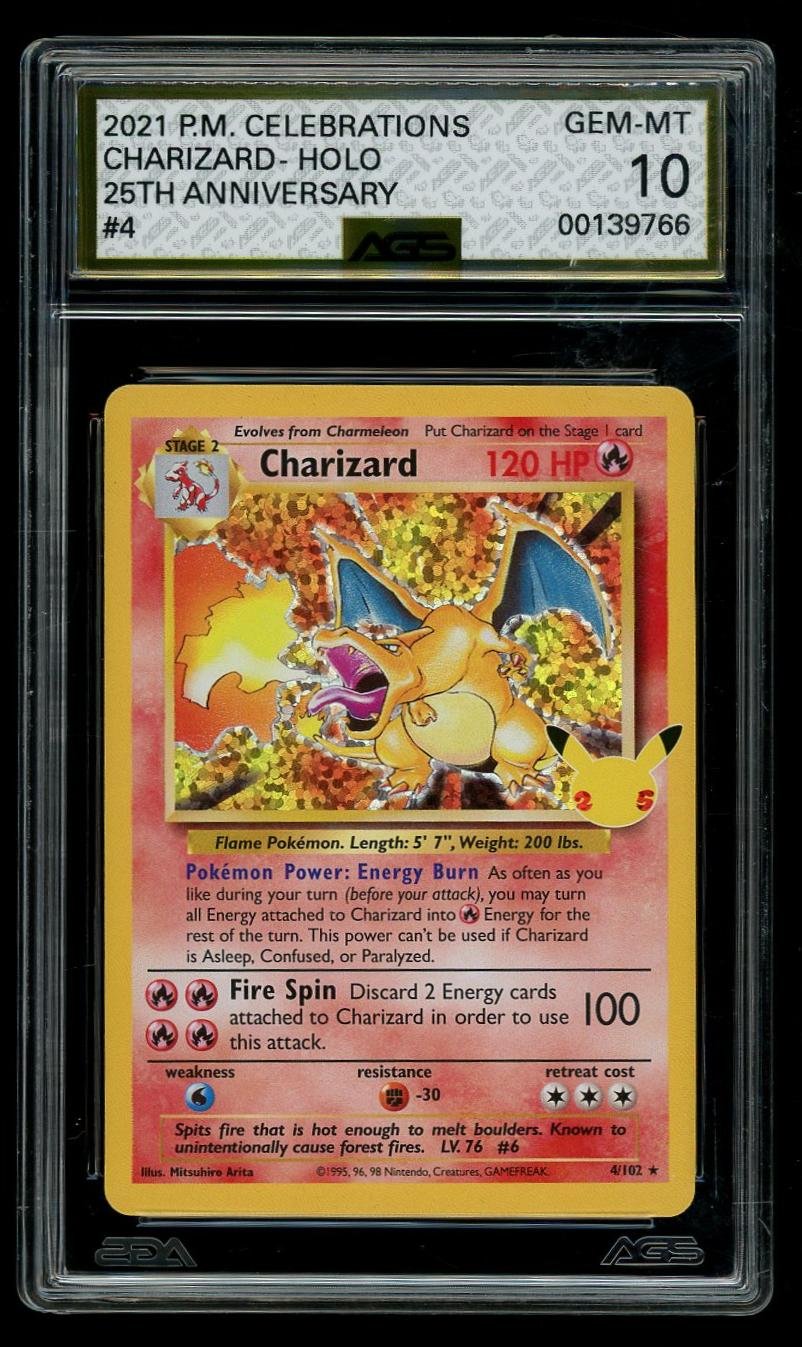
AGS Grading Standards
Discover the intricacies of AGS grading methodology, where the evaluation process hinges on subgrades like centering, edges, corners, and surface.
At AGS, each card is carefully analyzed using our proprietary RoboGrading AI system. This process combines advanced imaging, laser scanning, and artificial intelligence to ensure accuracy, consistency, and transparency across every card we grade.The overall grade of a card is determined by evaluating eight subgrades—four for the front and four for the back:
• Centering
• Edges
• Corners
• Surface
Each side of the card receives an Overall Subgrade Average, which then contributes to the Final Grade.
General Calculation
General Grade Calculation
Front Overall Grade = (Sum of Front Subgrades) ÷ 4
Back Overall Grade = (Sum of Back Subgrades) ÷ 4
Final Grade = (Front Overall Grade × 0.6) + (Back Overall Grade × 0.4)
This means the front of a card carries 60% of the final score, while the back contributes 40%, since front presentation is most visible and impactful to collectors.
Rounding Rules
After calculation, the Final Grade is rounded according to the following scale:
0.00–0.24 → Rounded down
0.25–0.74 → Rounded to 0.5
0.75–0.99 → Rounded up
Excessive Defect Limit
The overall grade cannot exceed 1 point above the lowest overall subgrade. For example, if the algorithm determines a Final Grade of 8, but the overall surface subgrade is a 5, the Final Grade is automatically capped at 6. This ensures that no single component with significant flaws is overlooked in the final result.
Special Cases
Vintage Cards
Cards manufactured before 2016 receive a 1–5% adjustment boost to account for systematic printing inconsistencies verified in our database.
Crease Override
A single crease under 1 inch limits the maximum overall grade to 5 (EX). A crease over 1 inch or multiple creases cap the overall grade at 4 (VG-EX) and so on.
Error Cards
Authentic printing errors (such as missing foil or misprints) are not penalized when confirmed as genuine by our system. Overall grade is typically capped at 9. Such cards may be labeled “ERROR” with subgrades reflecting only non-error features.
Qualifiers
Certain cards may include qualifiers to clarify special conditions that affect grading or labeling.
MK (Marks)
Indicates original marks on the card (ink, pen, or writing).
The overall grade cannot exceed 8 (NM-MT).
Cards with heavy markings may be labeled “MK” without a numerical grade.
OC (Off-Center)
Designates misaligned or uneven borders from printing.
Cards with a centering subgrade below 6 are labeled “OC”.
PD (Print Defect)
Often not qualified, instead grade will be reduced according to severity.
Refers to factory print imperfections (e.g., smudges, roller lines, or missing ink).
Minor print defects may still achieve high grades, but severe ones prevent a 10 (GEM-MINT).
MC (Miscut)
Indicates the card was cut incorrectly during manufacturing.
If mild, the card will have an “MC” label with a numeric grade.
If severe, the card receives only the “MC” qualifier without a number grade.
AA (Authentic Altered)
The card is confirmed authentic but has been altered (trimmed, recolored, cleaned, etc.).
Such cards will not receive a numerical grade and will be labeled “AA”.
Harsh Override Rules
Certain defects are critical and require manual review.
If detected, manual overrides will apply to ensure the final grade accurately reflects the card’s condition.
Cards with major dents or bends cannot exceed 8 (NM-MT) overall.
If the dent or bend is on the front, where visibility is higher, the grade is typically capped around 7 (NM).
The front-to-back weighting (60/40) remains in effect during these overrides.
Annotations & Defect Classifications
AGS uses annotations to categorize defects observed on a card. These annotations help collectors understand the type and severity of any imperfections affecting the grade.
Defects in key visual areas (e.g., holographic or main art zones) have a greater impact on the overall grade than minor edge or background flaws.
Centering is graded statistically using border distance, parallelism, and angle symmetry.
Minor Defects
Typically involve wear and tear from normal handling.
Examples: corner and edge wear, surface scratches, and light scuffs, light whitening.
Minor defects do not include deep dents or paper loss.
Major Defects
More significant issues that impact the card’s condition.
Examples: discoloration, stains, liquids, dirt, water damage, writing, markings, slight bends, folds, or dents.
In some cases, manual overrides may be applied to ensure the final grade accurately reflects the card’s condition.
Critical Defects
Severe damage that significantly reduces the card’s value and grade.
Examples: creases, extensive liquid exposure, or foreign substances (food, liquids, or other material stuck to the card).
Cards with critical defects are manually reviewed, and grades are adjusted accordingly.
Understanding RoboGrading AI Models and Annotations.
Our RoboGrading AI uses advanced neural networks built on proprietary multi-model data to evaluate every card with exceptional precision. The system identifies and annotates areas of impactful damage.
However, not every instance of minor or subtle damage will receive a visible annotation. This does not mean the AI missed it — rather, the model’s analysis incorporates these smaller imperfections within its overall grading decision. Even when certain front-surface issues (like faint print lines or light abrasions) aren’t individually marked, they are still detected at the pixel level and factored into the final score.
In short, annotations highlight the most significant factors influencing the grade, while the AI’s full-scan evaluation ensures accuracy by assessing all visual data — including unannotated areas. This approach provides collectors with both transparency and consistency in every grade.
1. Centering Model
Uses object detection to isolate card borders.
Accurately measures centering through inner and outer border symmetry, angles, and distances.
Evaluates centering consistency across the entire card face.
2. Defect Model
Uses semantic segmentation to detect and annotate laser-identified imperfections, including whitening, scratches, creases, print lines, stains, and tears.
Produces precise defect maps and visual overlays using both optical and laser data.
3. Grading Model
Combines data from the first two models to assign subgrades for edges, corners, and surface.
• Evaluates defects based on size, depth, and location and deducts based on the % and severity of pixels damaged for that specific sub region.Depth is measured via laser mapping.
Size is based on the annotated defect area.
Location determines impact — for example, flaws within the primary art or holo area affect grades more significantly than those near the borders.
Centering grades are calculated separately through a statistical symmetry model.
The Human Element
While RoboGrading AI delivers unmatched precision, certain conditions demand human expertise.
Cards showing critical defects, bends, dents, or irregularities are reviewed by our specialists.
These manual overrides ensure that the final grade reflects both objective AI data and professional judgment.
There will be situations where the grades will not exactly reflect the above mentioned guidelines. In these cases refer to "Customer Notes"
Our Commitment to Consistency
At AGS, transparency is at the core of everything we do. Every grade is supported by laser-accurate data, detailed analysis, and a clear set of grading principles. Our hybrid process — AI precision with expert review — guarantees that each card is evaluated fairly, consistently, and with the integrity collectors can trust.
AGS is dedicated to grading consistency, transparency, and innovation. Every card is reviewed through a combination of AI analysis and expert oversight, ensuring accurate and fair assessments across all submissions.Our system balances data-driven precision with human expertise — ensuring collectors always understand why their card received its grade
AGS Grading Scale
AGS GEM-MT+ LEGENDARY 10
An AGS 10 Legendary card epitomizes perfection. On an AGS Legendary card - all eight subgrades on front and back receive a 10. Edges and corners are sharp and void of defect. The surface is absolutely flawless. Centering is perfect (50/50 to 55/45). This grade is extremely rare. View here
AGS GEM-MT+ 10
An AGS 10 is a flawless card. Qualities include no visible defects, nearly perfect centering (55/45 to 60/40), sharp edges and corners, and little to no manufacturing defect. Minor imperfections may be acceptable if it doesn’t limit the card’s overall appeal. On such cards most of the subgrades are 10s.
View here
AGS MINT 9
AGS NM-MT 8
AGS NM 7
An AGS 7 is a card with surface wear visible upon inspection with possible fraying on corners. The overall appeal of the card will be maintained and the card may not have any creases or major damage.
View here
AGS EX-MT 6
An AGS 6 card may have visible surface wear or a printing defect. A very light major defect may be detected upon close inspection. Corners may have slightly graduated fraying or clusters of minor defects. Light notching and staining are also allowed here. View here
AGS EX 5
In AGS 5 cards, you may notice general wearing of the corners starting to emerge. Surface wear or printing defects may become more noticeable, and there could be minor chipping along the edges. The original appeal of the card may show signs of fading, and the picture's focus might be slightly off-register. Upon close inspection, you might observe a few light scratches, but they won't significantly diminish the card's appeal. Some off-whiteness of borders may be present.
View here
AGS VG-EX 4
In AGS 4 cards, you might observe general wearing of the corners. Surface wear is noticeable but not extensive. There may be light scuffing or scratches present, and some original appeal will still be retained. Borders may exhibit a slight off-white tint. You may notice a light crease on the card.
AGS VG 3
In AGS 3 cards, you may notice general wearing of the corners, although not excessively so. Surface wear will be evident, possibly accompanied by light scuffing or scratches. The focus of the image may be slightly off-register, and the edges may show noticeable signs of wear. While much of the original appeal of the card may be lost, some appeal may still remain. Borders may display some yellowing or discoloration. You might observe a visible crease on the card, and there is a possibility of printing defects. Additionally, slight staining may be present on the obverse, and wax staining on the reverse may be more noticeable.
View here
AGS GOOD 2
In AGS 2 cards, you'll likely notice accelerated wearing of the corners, indicating significant wear. Surface wear becomes increasingly evident, with scratching, scuffing, light staining, or even chipping of enamel on the obverse possible. Multiple creases may be present on the card. Original gloss may be entirely absent, and considerable discoloration may be apparent.
View here
AGS FR 1.5
In AGS 1.5 cards, you'll observe extreme wear, particularly evident in the corners which may affect the framing of the picture. The surface of the card will exhibit advanced stages of wear, including scuffing, scratching, pitting, chipping, and staining. The picture may appear significantly out-of-register, and the borders may have become brown and dirty. Heavy creases may also be present. To achieve a Fair grade, the card must remain fully intact. While heavy wear is acceptable, the card cannot achieve this grade if it is missing solid pieces, such as due to a major tear. This includes damage such as the removal of the back layer of the card or an entire corner.
View here
AGS PR 1
In AGS 1 cards, similar to AGS 1.5, you'll find many of the same defects, but they may have progressed to an even more serious stage, nearly completely diminishing the eye appeal of the card. A Poor card could be missing one or two small pieces, display major creasing that almost breaks through all layers of cardboard, or show extreme discoloration or dirtiness throughout, making it challenging to identify the issue or content of the card on either the front or back. Additionally, such a card may exhibit noticeable warping or another type of destructive defect.
View here
















